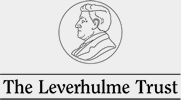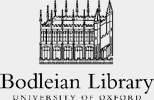A collection of divine hymns and poems upon several occasions (1704, 3rd edition, 1719)
The taste for the ribald and risqué humour of such collections as Hilaria: Or The Festive Board (1798) was not universal. 'Profane and Leud Poetry is one of the greatest Incentives to Wickedness in the World' complained one early-eighteenth century writer: 'like the Syren's Melody, while it Charms it Kills us.' Such poetry was a temptation to vice; anyone with 'any Concern for Religion, or the Happiness of Mankind' could only view with sadness the corrupting energies of the many 'Plays, and other books of Poetry and Gallantry' which abounded in the current literary market.
Readers who felt such concerns would have found comfort in miscellanies such as A Collection of Divine Hymn and Poems upon Several Occasions, first published in 1704. Designed as an antidote to literary vice and poetic irreligion, this collection gathered together poems by 'Men of unquestionable Reputation', particularly Wentworth Dillon, Earl of Roscommon, John Dryden, John Norris, and John Dennis. These male authors were joined by Elizabeth Singer, whose verse appears variously attributed to 'Philomela', 'a young lady', 'an unknown hand', and 'Mrs Singer'.
This collection of hymns, biblical paraphrases, odes, dialogues, meditations and depictions of heaven and hell were all offered as 'Divine and Vertuous poetry', designed to 'tame the Savage, inspire the Stupid, melt the Cruel, quench the Flames of Lust, and blow up the Flames of Devotion!' It was reprinted several times, with a third edition appearing in 1719, and a fourth in 1757. The demand for religious collections was also met by miscellanies such as Miscellanea Sacra (1705), The Christian Poet (1735) and The Seraph (1754). Religious verse could also be found in a range of other miscellanies: Robert Goadby's Miscellaneous Pieces, also included in our featured collections, shares a number of poems with A Collection of Divine Hymns and Poems.
Dr Jennifer Batt, University of Oxford




